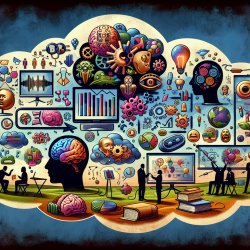Introduction
In the realm of speech-language pathology and online therapy services, the challenge of addressing conduct disorder (CD) and antisocial personality disorder (ASPD) in adolescents is significant. Recent research by Tuck and Glenn (2021) offers a compelling exploration into moral neurohabilitation as a promising approach to address these disorders. This blog delves into the findings of their study, highlighting how practitioners can leverage these insights to enhance therapeutic outcomes for young individuals.
Understanding Conduct and Antisocial Personality Disorders
Conduct disorder in childhood and adolescence can lead to more severe antisocial behaviors in adulthood, often manifesting as ASPD. The research underscores the importance of early intervention, particularly for those exhibiting callous-unemotional traits, which are indicators of a more severe delinquency trajectory. Traditional treatment methods have often fallen short, necessitating innovative approaches.
The Promise of Moral Neurohabilitation
Moral neurohabilitation focuses on developing the affective moral domain in adolescents with CD and ASPD. This approach is grounded in the idea that enhancing moral intuition and empathy can mitigate the progression of antisocial behaviors. The study suggests that targeted interventions can potentially reshape the moral and emotional frameworks of these individuals, leading to more positive societal outcomes.
Practical Implications for Practitioners
Practitioners working with adolescents exhibiting conduct and antisocial behaviors can consider integrating moral neurohabilitation strategies into their practice. Here are some actionable steps:
- Incorporate Empathy Training: Utilize activities that foster emotional understanding and moral reasoning, such as role-playing and guided discussions.
- Leverage Technology: Explore the use of neurotechnologies that can aid in moral development, as discussed in the research. This might include virtual reality scenarios that simulate moral dilemmas.
- Collaborate with Multidisciplinary Teams: Engage with psychologists, educators, and neurologists to create comprehensive treatment plans that address both behavioral and neurological aspects.
Encouraging Further Research
While the research by Tuck and Glenn provides a foundational understanding of moral neurohabilitation, it also highlights the need for further exploration. Practitioners are encouraged to contribute to this evolving field by conducting longitudinal studies and sharing their findings with the broader community.
Conclusion
Incorporating moral neurohabilitation into therapeutic practices holds the potential to significantly improve outcomes for adolescents with conduct disorders. By focusing on moral and emotional development, practitioners can help these individuals lead more adaptive and socially responsible lives.
To read the original research paper, please follow this link: Cultivating conscience: Moral neurohabilitation of adolescents and young adults with conduct and/or antisocial personality disorders.










